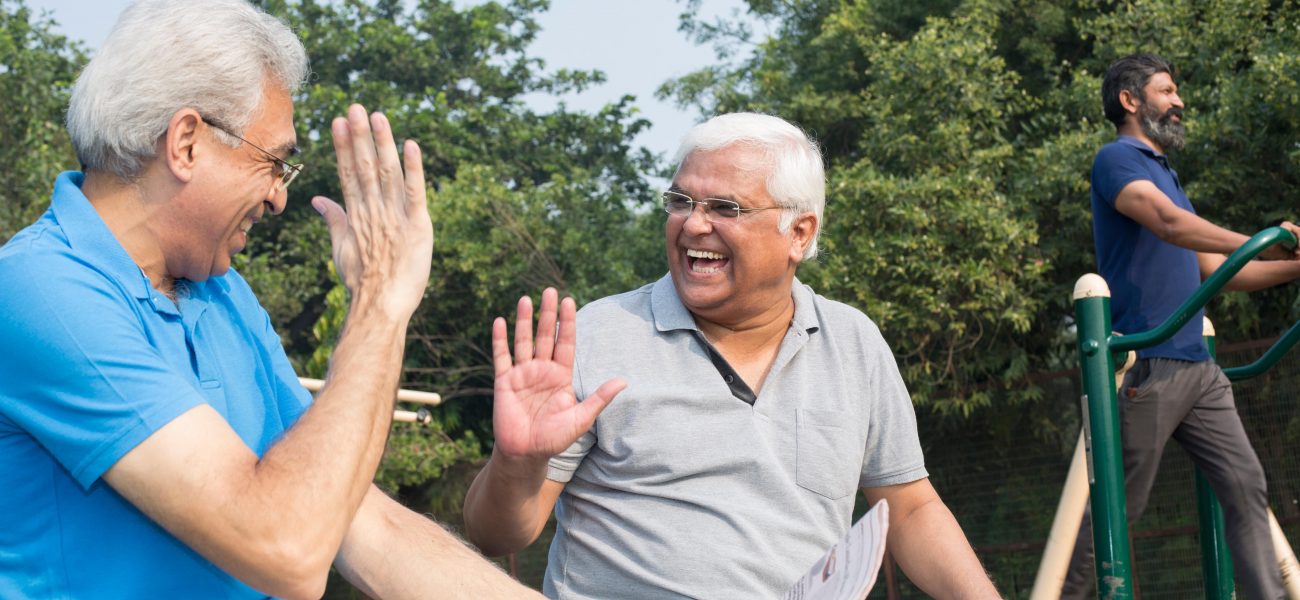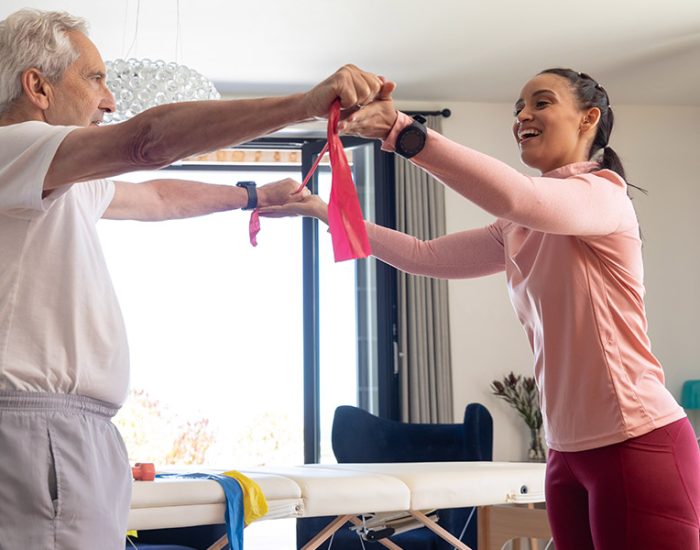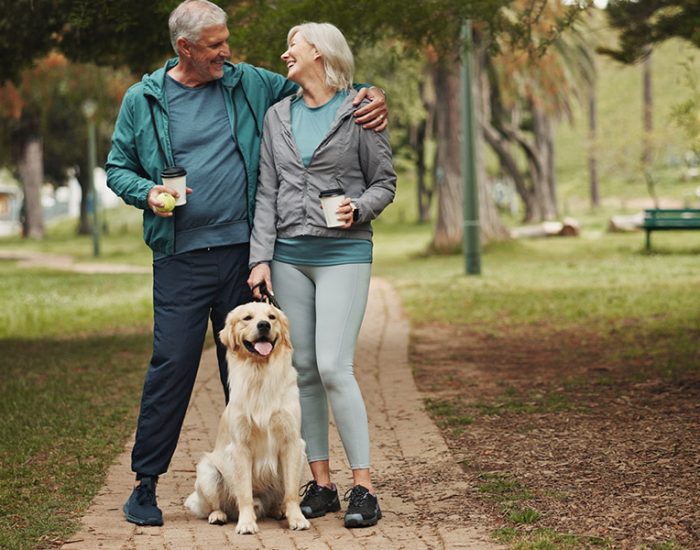Healthy Ways To Live An Active Life In Your Second Inning
A famous polish poet quoted a real fact when he said,’‘ Youth is a gift of nature, but old age is a work of art.”
At the age of 50 or more, you have assembled a half a century significance of experience, skill, knowledge, maturity, and wisdom about each phase of life. With a mind extensive with acuteness, intelligence that has only refined with the blade of experience and knowledge and holding responsibilities, now a phase of the past; you have an excellent blend for starting afresh. Inflamed by increased life expectancy, health awareness, and the expectation of greater financial security, the elderly are now embracing their second inning to cope up with this and to build long-term success. Here we have highlighted a quick guide to kick off your second innings:
1. Living an active life
Living an active life is very important to stay healthy and fit. Maintaining a healthy lifestyle helps to reduce heart disease, diabetes, and stroke. Exercise has also been related to improved physical health, mental health, and cognitive function.
You don’t have to become a distance runner to boost your health. The most important thing you should keep in mind is to stay active. It helps to:
• Give your heart a workout for staying fit
• Stay mentally strong
• Maintain a healthy weight and proper diet.
The mantra to staying active is to be happy and enjoy what you do.
2. Find the right environment to live
Always prefer positive and right surrounding to live, if you involve yourself with positive mind people it will keep your mental health activities. Being socially connected contributes a lot to maintaining an active lifestyle.
3. Try to find out a new purpose
With ample extra time in the day, you can use it effectively and productively to benefit others while leading an active life at the same time. There are a lot of people who need help. If you are zealous about helping others, retirement offers you an excellent opportunity to help others and bring a smile to others’ faces.
Volunteering is an excellent option. If you have any proper skills, such as teaching, you can start teaching children at home as this is a sensible way to spend your time. You can opt for mentoring schoolchildren and college students to choose the right career paths and uplift their skills for a better opportunity. If you have good skills and knowledge about counseling, you can work with veterans. Apart from this, you can go for other options like volunteering at the local animal shelter to take care of dogs or cats. Ideally, searching for an aim in life after retirement can make you remain active for a happy and healthy lifestyle.
4. Taking a class
Taking a class is also the best way to improve your ability of cognitive function. Learning new things and discovering creative ideas in your retired life helps you use your active brain to boost your memory performance. Indulging yourself in any kind of class also gives you opportunities for being socially connected with other people. You can learn something interesting, such as playing a musical instrument, dancing, painting, and gardening. An adult education course at a community college is also a rewarding option to be considered.
Taking a class keeps you engaged and interactive during your retired life. If urinary incontinence bothers you and disrupts your active schedule, consider using Lifree adult diapers. They come in a range of sizes and are highly absorbent. They will help to keep you dry and comfortable. This will give you the freedom and confidence to live an active life in your second innings instead of being cooped up at home.
Say hello to brand new second innings with confidence.
FAQ’s
2. What types of exercises are safe and effective for seniors?
Seniors should focus on low-impact, joint-friendly activities that support flexibility, strength, and balance. Walking is a simple and effective exercise that supports heart health and leg strength. Gentle yoga or stretching can improve flexibility and reduce stiffness. Light weight training, under guidance, helps build muscle and protect bones. Water exercises are also excellent for those with joint issues, as water reduces impact while still strengthening muscles. Balance exercises like standing on one foot or using a balance board can help reduce the risk of falls. It’s important to start slow and listen to your body. Consulting a doctor or physiotherapist before starting any new exercise routine is always a good idea to ensure safety and suitability based on individual health conditions.
3. How does mental wellness contribute to an active life in later years?
Mental wellness is just as important as physical health when it comes to staying active in your second innings. A positive mindset encourages seniors to take better care of themselves, try new activities, and maintain social connections. Keeping the mind sharp through reading, puzzles, or learning new skills helps reduce the risk of memory issues. Staying socially engaged also prevents loneliness and depression, which are common in older adults. Regular routines, meaningful hobbies, and spending time with loved ones can improve emotional well-being. Practices like meditation and gratitude journaling can bring calmness and a stronger sense of purpose. When mental wellness is prioritized, seniors are more motivated to stay active, take part in community life, and enjoy a higher quality of life overall.
4. What role does diet play in healthy aging and staying active?
A balanced diet is key to staying healthy and active in later years. Proper nutrition helps maintain strength, energy, and immune function. Seniors should eat a mix of fruits, vegetables, whole grains, lean proteins, and healthy fats. Foods rich in calcium and vitamin D are important for bone health. Staying hydrated is equally crucial, even if the sense of thirst decreases with age. Avoiding too much sugar, salt, and fried foods helps prevent health issues like high blood pressure and diabetes. Eating smaller meals throughout the day can improve digestion. Including fiber helps with bowel health. Consulting a dietitian can help create a meal plan based on individual needs. With the right diet, seniors can support their physical and mental energy, making daily activities more enjoyable and manageable.
5. How can seniors stay socially active and connected?
Social activity is vital for emotional health and overall happiness in later life. Seniors can stay connected by joining community groups, senior clubs, or activity centers where they can meet peers and participate in fun events. Volunteering is also a great way to give back and interact with others. Regular calls or visits with family and friends help avoid feelings of loneliness. Learning to use video calls or messaging apps can keep seniors in touch with distant loved ones. Engaging in hobbies like gardening, art, or group games creates opportunities to bond and share joy. Social connections improve self-esteem, reduce stress, and encourage physical activity. Staying socially active not only brings purpose and fun but also contributes to a healthier, longer, and more fulfilling life.
6. What are some small daily habits that support healthy aging?
Simple daily habits can make a big difference in maintaining health and energy during the second innings. Waking up and sleeping at the same time every day supports better rest. Drinking enough water, eating balanced meals, and walking for 20–30 minutes can boost energy and digestion. Gentle stretches in the morning improve flexibility. Taking breaks during long periods of sitting helps avoid stiffness. Practicing mindfulness, reading a book, or listening to music supports mental calm. Limiting screen time and staying engaged in real-world activities encourages better focus. Staying curious and trying new things keeps the mind active. Regular health check-ups help monitor well-being. These small, consistent actions create a routine that supports long-term health and independence while improving day-to-day quality of life.
7. How can seniors manage common physical limitations while staying active?
It’s possible to stay active even with physical limitations by choosing the right activities and using helpful aids. Chair exercises, light stretching, and water aerobics are gentle on joints. Using walkers or canes can improve stability during movement. Break tasks into smaller parts and take regular rest periods. Practicing good posture and wearing supportive footwear can reduce strain. For those with balance issues, doing exercises near a wall or sturdy surface offers safety. Home modifications like grab bars and anti-slip mats can support mobility. It’s important to listen to the body and stop when pain or discomfort arises. Consulting a doctor or physiotherapist can provide customized routines. With the right support, even those with challenges can enjoy the benefits of movement and feel more confident in their daily lives.
8. What are the emotional benefits of leading an active lifestyle post-retirement?
An active lifestyle offers many emotional benefits for seniors, especially after retirement. Staying busy through physical activity, hobbies, or social events helps reduce feelings of boredom and loneliness. Regular movement boosts mood by releasing feel-good hormones. Being part of a group or learning something new builds self-esteem and creates a sense of achievement. Having a purpose or routine brings structure to the day, which helps reduce anxiety or restlessness. Sharing time with others—whether in exercise groups, cultural activities, or family events—also creates joy and belonging. Feeling physically healthy supports confidence and independence. Altogether, an active lifestyle leads to a brighter outlook, better relationships, and greater life satisfaction in the later years.
9. How can adult diapers support mobility and an active lifestyle for seniors?
For seniors experiencing bladder control issues, adult diapers offer a simple way to stay confident and mobile. Modern adult diapers are designed to be comfortable, discreet, and highly absorbent, allowing users to go for walks, attend events, or travel without worry. Wearing them helps avoid the fear of accidents, which often keeps people from leaving home. Diapers with a pant-style design are easy to wear and remove, especially for active users. For those who prefer help from caregivers, tape-style options are also available. These products provide peace of mind and help seniors stay engaged in life without interruptions. By managing incontinence smartly, seniors can continue participating in daily activities and enjoy a more active, worry-free lifestyle.
10. What can families do to support seniors in staying active and healthy?
Family support plays a major role in helping seniors lead an active and happy life. Encouraging regular exercise, joining them for walks, or involving them in household tasks helps keep them moving. Listening to their concerns and being patient creates a safe space for open conversations. Helping them attend community events or setting up video calls with distant relatives maintains social bonds. Supporting healthy eating and medical check-ups shows care. Introducing light technology use, like apps for music, books, or video chats, keeps them engaged. Most importantly, families can cheer them on, celebrate small wins, and make time for quality moments together. Active aging becomes easier and more enjoyable when it’s supported with love, respect, and companionship from the people they trust.






















